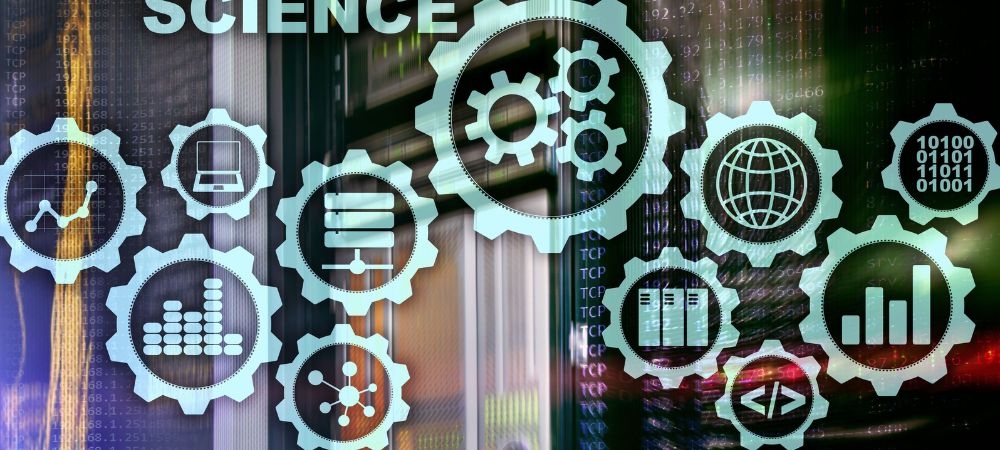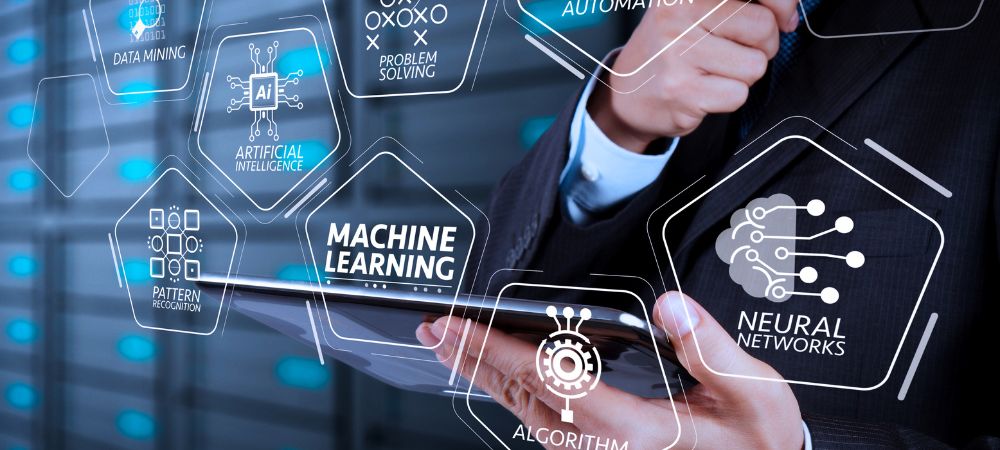

Inferential statistics, huh? It's quite the interesting topic. Unlike descriptive statistics, which merely summarize data, inferential statistics lets us draw conclusions and make predictions about a population based on a sample. Now, let's dive into some key concepts and terminology that are fundamental to understanding this branch of statistics.
additional details accessible see it.
First off, there's "population" and "sample." A population includes all members of a defined group that we’re studying or collecting information on. However, it’s usually impractical to study an entire population due to its size. That's where a sample comes in – it's just a smaller part of the population that's selected for analysis. You can't talk about inferential stats without mentioning these two terms!
Now, moving on to parameters and statistics – no need to get confused here! A parameter is any numerical value that describes a characteristic of the whole population (like the mean or variance), whereas a statistic refers to any number that describes a characteristic of your sample. Parameters are constants; they don't change unless you redefine the population itself.
Confidence intervals are another biggie in inferential stats. These intervals provide a range within which we believe the true parameter lies with certain confidence level – typically 95% or 99%. It's like saying: “Hey, we're pretty sure (but not entirely) that our parameter falls somewhere between these two numbers.”
Hypothesis testing is also crucial and often misunderstood. It involves making assumptions (or hypotheses) about a population parameter and then using sample data to test those assumptions. The null hypothesis (H0) represents the status quo or no effect scenario while the alternative hypothesis (H1) suggests there is an effect or difference. If our test results show enough evidence against H0, we'll reject it in favor of H1.
The p-value plays an important role in hypothesis testing too! It tells you how probable your observed data would be if H0 were true. A low p-value means there's strong evidence against H0 – so you'd reject it! Oh boy - but remember: it doesn't mean H1 is definitely true either!
Don't forget about Type I and Type II errors though! In simple terms: A Type I error occurs when you wrongly reject H0 when it's actually true; whereas Type II error happens when you fail to reject H0 even though H1 is true instead.
Lastly folks - let’s touch upon significance levels (alpha). This is pre-set threshold used for deciding whether our p-value indicates significant results or not - commonly set at 0.05 meaning we'd accept up-to-a-5% chance making wrong decision rejecting truly correct null hypothesis
So yeah...inferential stats uses all these concepts together helping researchers generalize findings from samples back onto their populations hence advancing knowledge fields ranging social sciences medicine business more.
Inferential statistics, for data scientists, ain't just a fancy term thrown around in meetings. It's the backbone of decision-making in the world of data. You see, while descriptive statistics helps us summarize and describe our data, inferential statistics goes a step further – it lets us make predictions and draw conclusions about a population based on a sample. That's huge!
Now, why is this so important? Well, let's say you’re analyzing customer behavior for an e-commerce website. You can't possibly gather data from every single customer who visits your site – that'd be impractical and downright impossible! Instead, you collect data from a sample of visitors and use inferential stats to make educated guesses about the entire customer base. This way, you're not just shooting in the dark.
One major aspect of inferential statistics is hypothesis testing. Data scientists use it all the time to test assumptions or claims about their data. For instance, if someone suggests that changing the color of a "Buy Now" button will increase sales, you'd need more than just gut feeling to support or refute this claim. With hypothesis testing, you can determine whether any observed changes are statistically significant or just random noise.
Confidence intervals are another vital tool within inferential statistics that data folks can't ignore. They provide a range within which we expect our population parameter to lie with certain confidence level – usually 95%. This isn't about being 100% sure but rather acknowledging there's room for error in our estimates - something that's crucial when making decisions based on incomplete information.
And oh boy, let’s not forget regression analysis! It’s like magic for predicting outcomes and understanding relationships between variables. If you're trying to figure out how different factors affect house prices or what influences customer churn rates most strongly – regression's got your back.
Without inferential stats, we'd often find ourselves swimming in uncertainty with no real direction. We might end up relying solely on intuition or anecdotal evidence which ain't exactly reliable nor scientific.
But hey, don't think it's all sunshine and roses with inferential statistics either! There are pitfalls too - like making incorrect assumptions about your sample representing the entire population accurately (which sometimes doesn't happen) or misinterpreting p-values leading to wrong conclusions.
In conclusion (there I said it!), Inferential Statistics play an indispensable role for Data Scientists by enabling them — through sampling techniques —to generalize findings beyond immediate datasets they work with; thus guiding strategic business decisions effectively despite inherent limitations involved along way... So next time someone mentions it during discussions remember importance behind those numbers!
The Internet was developed by Tim Berners-Lee in 1989, reinventing just how details is shared and accessed across the globe.
The term "Internet of Things" was created by Kevin Ashton in 1999 throughout his work at Procter & Gamble, and now refers to billions of devices all over the world connected to the internet.
Since 2021, over 90% of the globe's data has been generated in the last 2 years alone, highlighting the rapid development of data creation and storage space demands.
Elon Musk's SpaceX was the very first private business to send a spacecraft to the International Space Station in 2012, noting a substantial change toward exclusive financial investment precede expedition.
Data Science, huh?. It's one of those buzzwords that seems to be everywhere these days.

Posted by on 2024-07-11
In today's tech-savvy world, the role of a data scientist ain't just important; it's downright essential.. See, we live in an age where data is literally everywhere, from our smartphones to our smart fridges.

Posted by on 2024-07-11
Machine learning's impact on data science is undeniably profound, and its future prospects are both exciting and a bit overwhelming.. It's hard to deny that machine learning has revolutionized the way we approach data analysis, but it hasn't done so without its fair share of challenges. First off, let's not pretend like machine learning just popped up out of nowhere.

Posted by on 2024-07-11
Navigating job searches and interviews in the field of data science can sometimes feel like an enigma, wrapped in a riddle, inside a mystery.. But hey, it's not as daunting as it seems!

Posted by on 2024-07-11
Mastering data science ain’t just about crunching numbers and building fancy algorithms.. There's a whole other side to it that experts don’t always talk about—networking with industry professionals and joining data science communities.

Posted by on 2024-07-11
Inferential statistics, it's a fascinating field! It's all about making predictions or inferences about a population based on a sample of data. This is super useful 'cause we usually can't study entire populations due to time, cost, or logistical constraints. So, what are some common techniques and methods used in inferential statistics? Well, let's dive right in!
One of the most popular techniques is hypothesis testing. You won't believe how often this gets used! Hypothesis testing involves making an assumption (a hypothesis) about a population parameter and then using sample data to test whether this assumption holds true or not. For example, you might wanna know if a new drug is more effective than an existing one. By comparing the effects observed in samples, you can make an educated guess about the larger population.
Then there's confidence intervals—oh boy, these are everywhere! A confidence interval gives you a range of values within which you're pretty sure the population parameter lies. Instead of just guessing one single number for your estimate, you get a whole range that reflects your uncertainty. It’s not only more informative but also adds some safety cushion around your estimate.
Regression analysis is another biggie in inferential stats. Essentially, it helps us understand relationships between variables. Suppose you're curious if hours studied can predict exam scores—regression analysis will help you figure out how closely these two variables are related and even allow you to make predictions based on that relationship.
Let’s not forget about ANOVA (Analysis of Variance). Who knew comparing means could be so important? ANOVA lets you compare three or more groups to see if at least one group mean is different from the others. It’s particularly handy when dealing with multiple categories or treatments; for instance, comparing customer satisfaction across different brands.
And don't even get me started on chi-square tests! These tests are used for categorical data to examine if there’s any association between variables. For example, you'd use it to find out if there's a relationship between gender and voting preference.
Now don’t think everything's perfect here—there're plenty of pitfalls too! Misinterpreting p-values is such a common mistake that even seasoned statisticians fall into sometimes. And let’s face it: correlation doesn’t imply causation; just because two things move together doesn't mean one causes the other.
So yeah, inferential statistics has its quirks and nuances but gosh—it’s indispensable for research and decision-making processes across various fields like medicine, marketing, economics—you name it!
In conclusion (not that I’m trying to sound formal), understanding these techniques can really open up worlds of insights from seemingly random data points. They’re powerful tools but need careful handling—not something you'd just eyeball casually at first glance!

Inferential Statistics in real-world Data Science projects is like the unsung hero we often don’t give enough credit to. It’s not just about crunching numbers; it’s about making educated guesses and predictions based on data. And, let’s be honest, who doesn’t love a good guess?
Imagine you’re working on a project for an e-commerce company. They want to know if their new marketing strategy is actually increasing sales. You can’t possibly survey every single customer (ain't nobody got time for that). So, you take a sample of the customers who interacted with the new campaign and compare their purchase behavior to those who didn’t see it. That’s where inferential statistics comes into play – helping you generalize your findings from that small sample to the entire customer base.
Now, let's talk about A/B testing, which is practically every marketer's best friend. Say you've got two different designs for a website landing page, and you wanna know which one performs better. By randomly showing visitors either version A or version B and analyzing conversion rates using inferential stats, you can determine with some level of confidence whether one design truly outperforms the other or not.
And hey, don't forget predictive modeling! Inferential statistics isn’t just about comparing groups; it also helps in predicting future trends. For instance, if you're working on forecasting stock prices or predicting customer churn rates, these techniques allow you to make predictions based on historical data while accounting for uncertainty.
But it's not all sunshine and rainbows – there are pitfalls too! Misinterpreting p-values or over-relying on small samples can lead down some pretty misleading paths. We’ve all seen those sensational headlines claiming miraculous effects based on flimsy evidence – that’s what happens when inferential statistics gets misused.
So yeah, while it may sound intimidating at first glance with its t-tests and chi-squares jargon, inferential statistics is essential for making sense of complex data without needing to measure every single element in a population directly. It bridges the gap between raw numbers and actionable insights in ways we'd be hard-pressed to achieve otherwise.
In summary (and I promise I ain't repeating myself), inferential stats are indispensable in real-world data science projects because they help us make informed decisions based on limited data sets – be it through hypothesis testing, A/B experiments or predictive modeling. Without them? Well...let's just say our guesses would be way less educated.
Inferential statistics, a cornerstone of modern research, is not without its challenges and limitations. These methods allow us to draw conclusions about populations based on sample data, but they're not foolproof. Oh no, they come with their own set of issues that can sometimes make researchers pull their hair out.
First off, there's the problem of assumptions. Inferential statistics often rely on several assumptions like normality, independence, and homoscedasticity (the idea that variances are equal across groups). If these assumptions ain't met, the results can be misleading or plain wrong. Imagine trying to fit a square peg into a round hole—it just doesn't work well.
Another biggie is sample size. A small sample might not represent the population accurately leading to erroneous conclusions. You can't generalize findings from 20 people to an entire country! Larger samples tend to provide more reliable estimates but also require more resources—time, money, and effort—which aren't always available.
Then there’s the issue of p-values and significance levels. Many times researchers get too hung up on achieving statistical significance (p < 0.05) while ignoring effect size and practical relevance. A result could be statistically significant but practically meaningless if it doesn’t have real-world implications.
Bias is another sneaky devil in inferential stats. Selection bias can creep in when samples aren’t randomly selected or when non-response occurs disproportionately among certain groups. This skews the results making them less representative of the population you're studying.
Interpreting confidence intervals could also be tricky for some folks. A 95% confidence interval means if you repeated your study 100 times, you'd expect your interval to contain the true population parameter 95 times outta those 100 attempts—not that there’s a 95% chance your specific interval contains it this time around!
Don't forget multicollinearity either! When predictors in a regression model are highly correlated with each other, it becomes tough to determine individual variable effects accurately. It’s like trying to hear one voice clearly in a room full of people talking at once—good luck with that!
Errors happen too; type I errors (false positives) occur when you reject a true null hypothesis while type II errors (false negatives) happen when you fail to reject a false null hypothesis . Balancing these risks requires careful planning and consideration which isn’t always straightforward .
So yeah , while inferential statistics offer powerful tools for understanding our world , they’re far from perfect . Researchers need caution , critical thinking ,and good judgement to navigate through these challenges effectively . Otherwise , we run the risk of drawing wrong conclusions -and nobody wants that !
Inferential statistics is a critical branch of statistics that allows researchers to make inferences and predictions about a population based on a sample of data. It’s fascinating how we can take a small slice of information and use it to draw conclusions about a much larger group. But let’s be honest, doing this manually would be nothing short of tedious. That’s where software tools and libraries come into play.
First off, let's talk about some popular software tools that are frequently used for conducting inferential statistical analysis. R is one such tool that's widely known among statisticians and data scientists. It's not just user-friendly but also incredibly versatile when it comes to statistical computations. You don't have to be an expert coder to get started with R, which is why it's so popular.
Another big player in the field is Python, especially with its powerful libraries like SciPy and Statsmodels. These libraries offer functions for hypothesis testing, regression analysis, and more advanced statistical techniques. I mean, who wouldn't want that? Python's simplicity combined with these robust libraries makes it an excellent choice for anyone diving into inferential statistics.
However, let’s not forget other tools like SPSS (Statistical Package for the Social Sciences) or SAS (Statistical Analysis System). These are more traditional but still highly effective options for conducting complex analyses without needing to write tons of code. They might not be as flexible as R or Python when it comes to custom solutions, but they’re certainly reliable.
Now onto some specifics – the libraries themselves! In Python, we’ve got Pandas too; while it's primarily known for data manipulation, it integrates seamlessly with other statistical libraries like SciPy and Statsmodels. Don’t underestimate Pandas' ability to handle large datasets efficiently – it's quite impressive!
In R, packages like dplyr and ggplot2 are essential companions for any statistician. Dplyr simplifies data manipulation tasks whereas ggplot2 excels at creating visually appealing plots that help interpret results better. Isn’t visualization key in understanding data? Well yeah!
But wait – how do these tools actually help in inferential statistics? Well, consider something simple like hypothesis testing – you could easily use SciPy in Python or base functions in R to test your hypotheses without much hassle rather than doing the calculations manually which could lead errors anyway! Another example: think about regression analysis - both Statsmodels (in Python) and lm function (in R) can fit different types regressions models pretty effortlessly.
Of course there're downsides too; learning curve associated with mastering these tools shouldn't be underestimated either! Even though they simplify lotta processes if one isn’t familiar enough might end up making mistakes interpreting results wrongly…
It goes without saying though—these softwares aren’t magic wands—they don’t do thinking part—that's still up us humans—for asking right questions—choosing appropriate tests—and finally interpreting results sensibly!
So yeah—software tools & libraries revolutionized way we conduct inferential stats today—but ultimately success depends on combining power those technologies—with our own analytical skills curiosity perseverance!